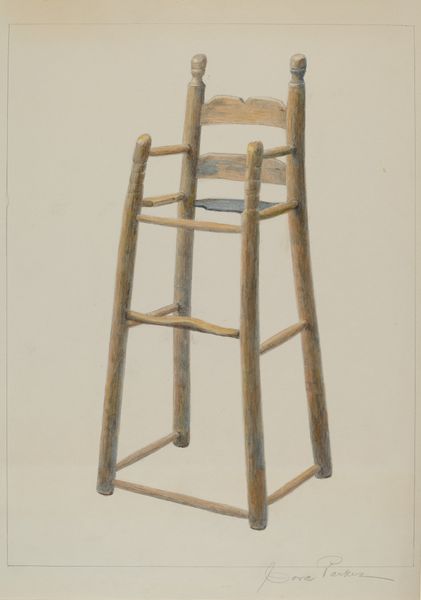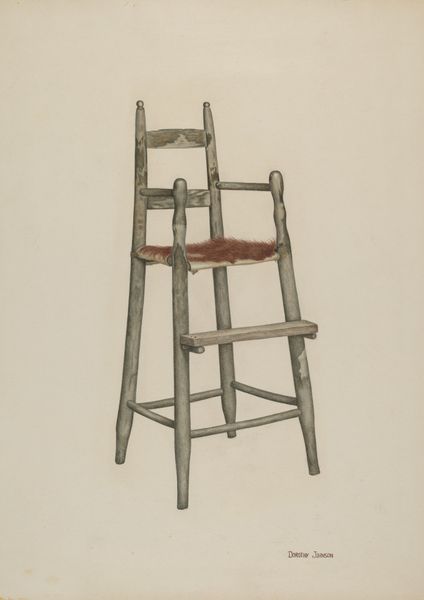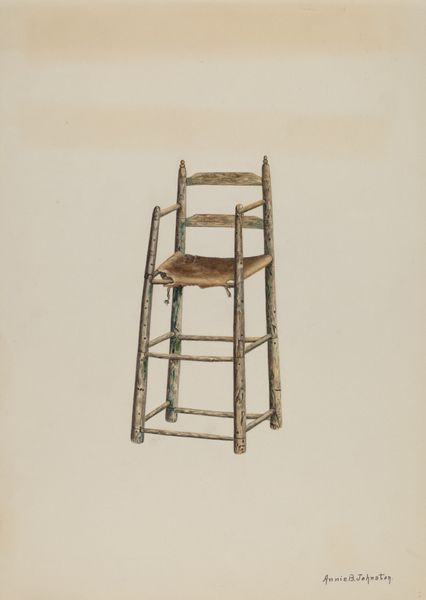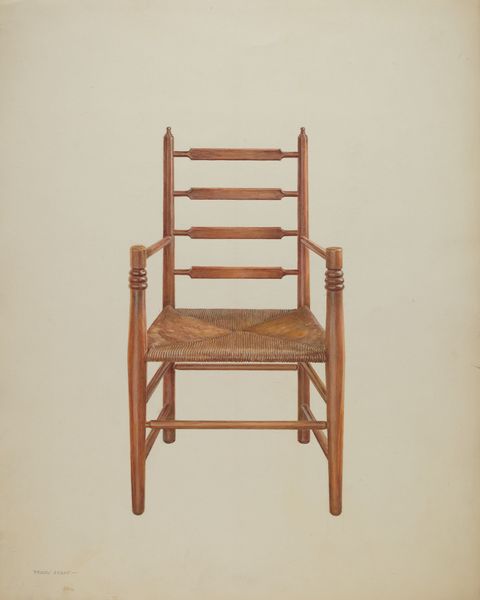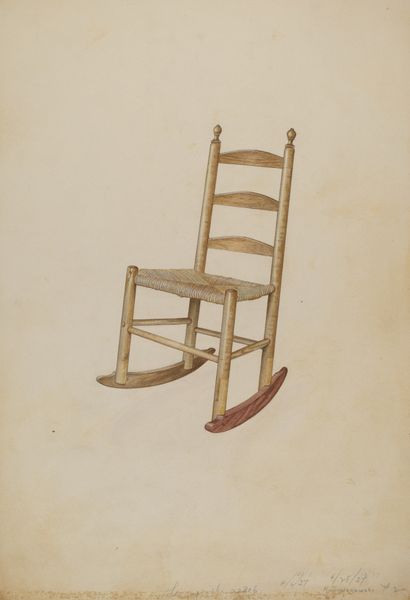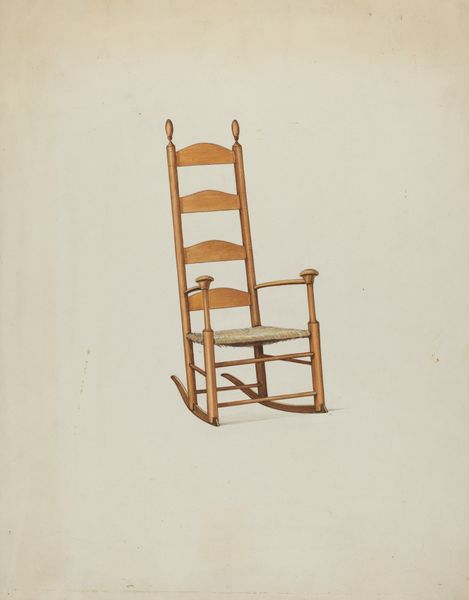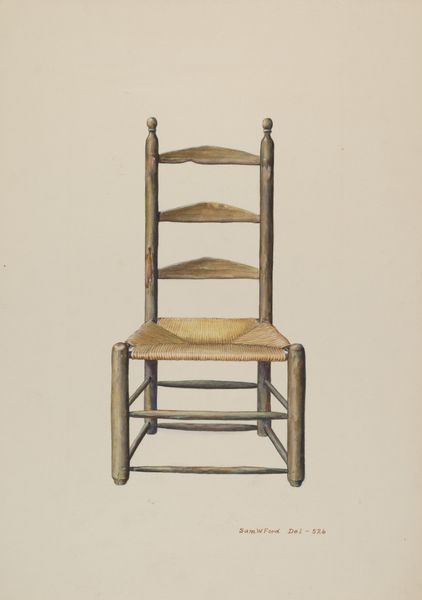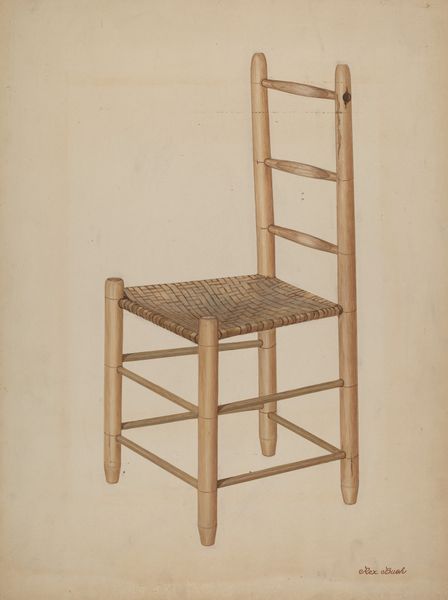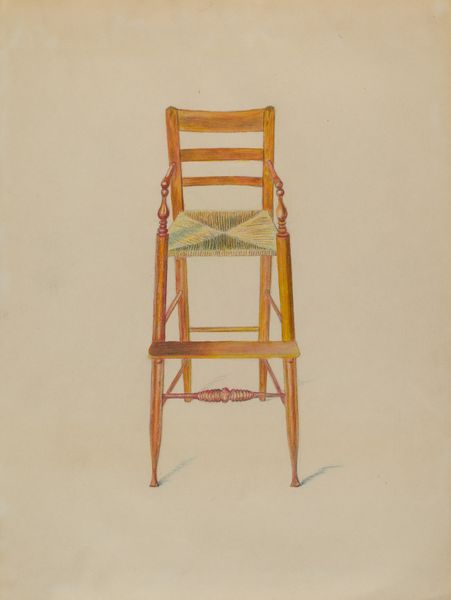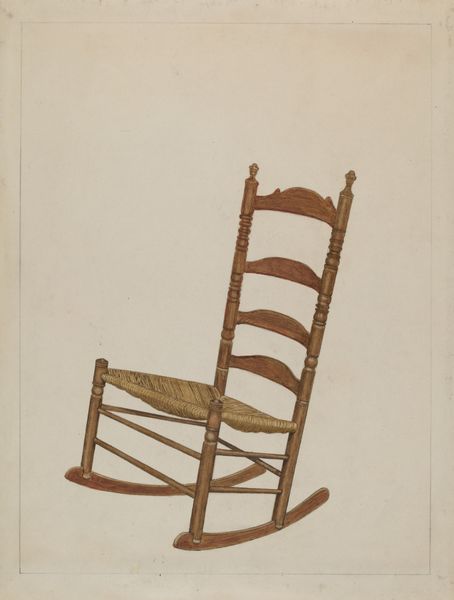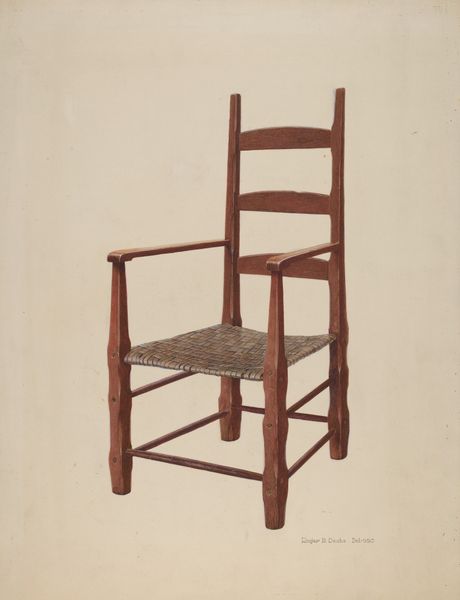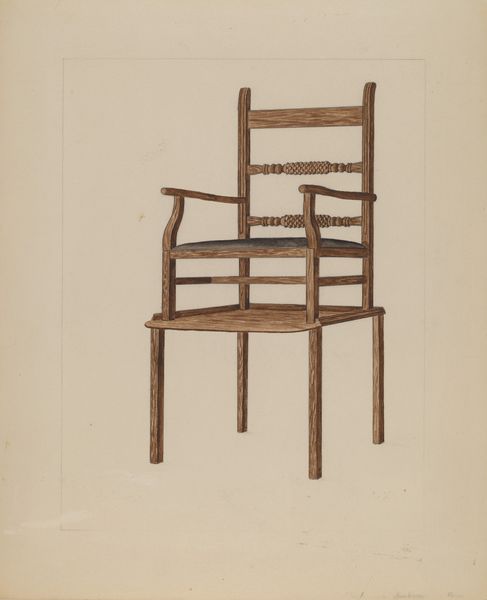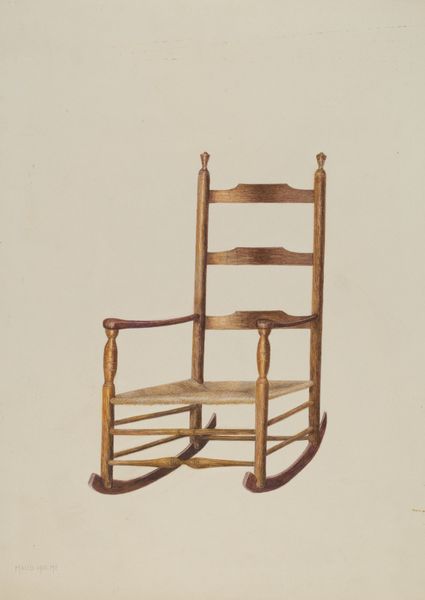
drawing, watercolor
#
drawing
#
watercolor
Dimensions: overall: 33 x 24.1 cm (13 x 9 1/2 in.) Original IAD Object: 31"high; 14"wide at base. See data sheet for dets.
Copyright: National Gallery of Art: CC0 1.0
Curator: Welcome. Before us is "Child's High Chair," a circa 1938 watercolor and drawing by Cora Parker. It's quite striking in its simplicity. What are your first impressions? Editor: Austere, almost monumental. The high chair fills the frame, rendered with precise lines and subtle washes of color. Its placement is slightly off-center which adds a certain visual tension. Curator: Indeed. And the high chair itself is laden with significance. A potent symbol of childhood, dependence, but also early learning. It's a space of ritual: feeding, discipline, observation of the adult world. Parker transforms a mundane object into something deeply evocative. Editor: I’m interested in the texture she's achieved with the watercolor. Look closely—the way she depicts the grain of the wood and the slightly uneven finish is exquisite, adding a tactile quality. It appears she’s using the visual vocabulary of modernism – abstraction and simplification of form – but it feels more intimate, more personal. Curator: It feels almost like a portrait of a generation. Consider the context: drawn during the late 1930s, amidst the Great Depression, such humble domestic scenes gain immense emotional resonance, emphasizing continuity during times of crisis. The ladder form also resonates across art history; it could be perceived as an early exploration of modern design. Editor: I'm more intrigued by the tension between the flatness of the medium and the attempt at three-dimensionality. There is an undeniable awkwardness, especially in the perspective. Curator: Perhaps that awkwardness itself carries meaning, highlighting the unsteadiness of childhood, the constant reaching, the effort to ascend. It invites us to recall our own clumsy attempts to find our footing in the world. Editor: The artist definitely captured that human sentimentality so well, and those subdued tonalities further augment this emotional impact. Curator: Parker successfully weaves together object, memory, and broader cultural anxieties, making this piece a tender meditation on transience and memory. Editor: I came here expecting a formal analysis and instead I feel like I've examined a ghost. How beautifully done.
Comments
No comments
Be the first to comment and join the conversation on the ultimate creative platform.
